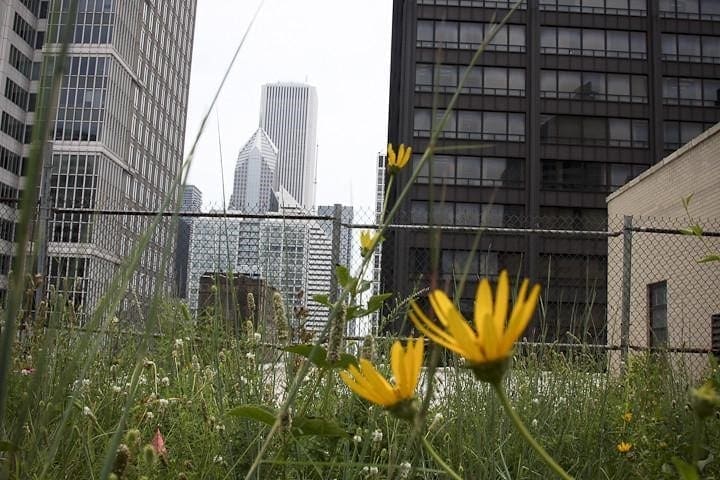From an economic standpoint, investing in green infrastructure makes an enormous amount of financial sense. It’s a lot cheaper to restore wetlands and natural floodplains, for example, than it is build a new water treatment plant or continue to raise flood or surge barriers year after year. And in addition, unlike manmade structures, green infrastructure rarely delivers on just one level, but offers numerous side benefits – such as improved air quality, a habitat for wildlife, and recreational areas that improve quality of life for residents.
Relying on grey infrastructure alone to solve problems like erosion, stormwater management, carbon sequestration and noise pollution means separate and costly solutions for each issue – where simply planting a few trees could have done the trick at a fraction of the cost!
Mother Nature’s been solving all the issues facing our towns and cities for millions of years – and it’s high time we took a leaf from her book.
What is green infrastructure?
Green infrastructure is essentially any part of the built environment which is designed to deliver ecological services through the inclusion of natural components. These components work together to help make our cities more sustainable and resilient places, as well as increasing biodiversity.
Familiar examples include parks and community gardens, street trees and wetlands, while some less common examples might be:
- Green roofs
- Porous pavements
- Rain gardens
- Bioswales
- Rainwater harvesting systems
- Vine canopies
- Living walls and vertical gardens
- Soak-away pits
- Wildlife overpasses
- Wildflower verges
And while incorporating green infrastructure on a large scale will provide the most benefit, even making small adjustments or changing attitudes can have a surprising impact. Gravel road construction in South Africa’s rural areas, for example, not only allows more rainwater to soak into the soil and replenish the water table (critical for a water-scarce country) but is also cheaper than traditional asphalt in many instances. More porous road surfaces reduce urban runoff, and therefore also lessen the risk of flash floods.
The unexpected and hidden benefits of green infrastructure:
We typically turn to green infrastructure or ecological services to solve a specific physical challenge or problem, such as:
- Regulating air quality by removing pollutants
- Water purification
- Erosion protection and soil retention
- Water flow regulation
- Soil structure and quality maintenance
- Climate protection such as mitigating the urban heat island effect with green roofs
- Flood prevention
But it’s perhaps the many less obvious or ‘hidden’ benefits which are the most intriguing. Most realtors and estate agents will know that trees increase property value. Combined with the popularity of hobbies and recreational activities that allow us to get ‘back to nature’, it’s clear that humans simply enjoy being able to see and interact with green spaces.
Green infrastructure is good for our health in several ways. Open, green spaces encourage outdoor activity and promote healthy forms of exercise. In fact, 90% of people agree that access to green spaces encourages them to be fit and healthy. This, in turn, can help to lower levels of obesity, as well as promoting better mental health and a greater sense of community.
Parks, gardens and other green recreational areas give us a place to relax with our family, friends and pets. Simply by getting us out into the sunshine rather than sequestered indoors in front of our screens, they can help alleviate depression and feelings of isolation and anxiety.
Pollinators and biodiversity
In areas which are already built-up and where space for large open areas simply doesn’t exist anymore, there are still many ways to bring more biodiversity into the urban landscape. Green roofs, vertical gardens, eco-bridges and fish ladders are all examples of green infrastructure which can be ‘retrofitted’ into existing urban spaces.
For small pollinators like bees, butterflies, and hoverflies, sprawling cities can become vast deserts where no food is available – which is not good news for us, as much of the food we eat ultimately depends on the services these creatures provide. The addition of even small stretches of green space, like green roofs and living walls, provide ‘stepping stones’ that these creatures can use to cross these urban deserts.
Carbon sequestration
While we normally talk about the sequestering of carbon in terms of climate change mitigation, we rarely consider that it’s also good for the health of the soil. Carbon extracted from the atmosphere and stored in falling leaves and other organic matter helps to promote the natural cycling of nutrients, all while also removing other pollutants from the air and water.
For all these reasons and more, taking every possible opportunity to bring green infrastructure to our towns and cities makes sense. By doing so, they truly can become happier, healthier, more resilient and more attractive places.


1 Comment
Pingback: SA must accelerate its electric car plan to avoid export revenue and job losses – Gibela Transport Magazine